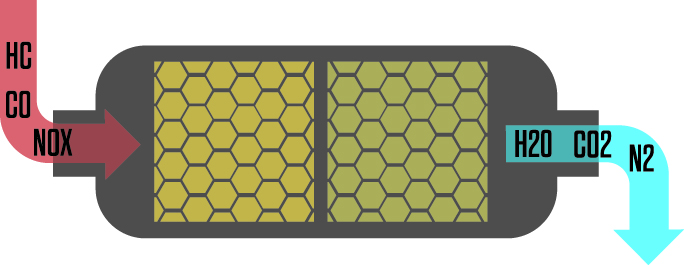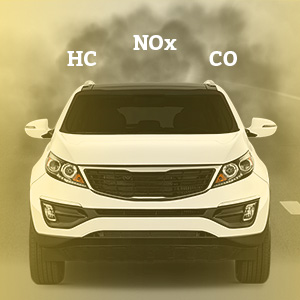Read time: 2 minutes
Have you ever killed a cat? I have.
I’m talking about a catalytic converter. I’m not a monster!

Every vehicle on the road today is required by the Federal Government to have a catalytic converter. It’s necessary for keeping our air free of poisonous contaminants which lead to things like smog, acid rain and lung disease.
If you are diligent about maintenance, a catalytic converter can last for 100,000 miles or more. However, a catalytic converter can actually be “poisoned” and fail to operate correctly well before 100,000 miles. We call that “killing the cat.” It’s a sad, unfortunate, and expensive result of hard driving, infrequent oil changes, and poor fuel system efficiency.
If this happens to you, well, let’s just say junior may have to defer his student loans a bit longer.
What causes damage to the catalytic converter?
Excessive exhaust
Under normal conditions, car exhaust is expected to contain small amounts of unburned fuel, or hydrocarbons (HC), and some poisonous nasties, like nitrous oxide (NOx) and carbon monoxide (CO).
If your car isn’t burning fuel efficiently, your catalytic converter will have to deal with more poisonous nasties than it can handle. Over time, an overload of these contaminants can lead to a premature death for your catalytic converter.

Oil contamination
The catalytic converter can also be damaged by evaporated engine oil. Oil vapors usually stay inside the engine. But, excessive amounts of vapors get carried into the combustion chamber where they mix with the fuel. Since the oil vapors are heavier than the fuel, they fail to burn completely.
The oil vapors still have to exit the engine, so they hitch a ride downstream with the exhaust gases (poisonous nasties) to the catalytic converter. When this happens, it’s only a matter of time before the oil plugs the converter completely, causing it to overheat and fail.
If the catalytic converter isn’t operating as it should, engine power may decrease, fuel use may increase, and there’s no reduction of the poisonous gases exiting the engine. At this point, the only solution is a costly replacement of the catalytic converter.
How do we protect the cat?
Give your engine some TLC! To avoid inadvertently killing the cat, you need to do two things: protect the fuel system and prevent oil contamination.
Use a fuel system cleaner to keep your engine clean and cut down on poisonous nasties. Also, add an oil additive to fortify your oil and an engine cleaner to reduce the amount of unwanted oil traveling back upstream to the catalytic converter.


Technical Service Manager
30 years of experience in fuel and lube technologies



